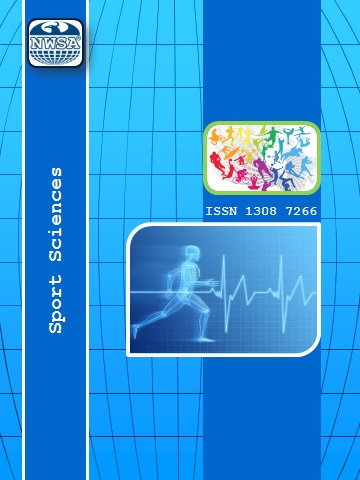BEDEN EĞİTİMİ DERSİNE YÖNELİK DURUMSAL GÜDÜLENME, TUTUM VE İÇSEL KONUŞMA ARASINDAKİ İLİŞKİ
Elif Nilay ADA1
,
Nikos COMOUTOS2
,
İlke DEMİRCİ3
,
Zeka PEHLEVAN 4
Bu çalışmada, durumsal güdülenme, içsel konuşma (İK) ve tutumun, öğrencilerin diğer algıları (Beden Eğitimi Dersini Sevme-SEV, Beden Eğitimi Dersine Kişinin Verdiği Önem-KVÖ ve Ailenin Beden Eğitimi Dersine Verdiği Önemi Algılama-AVÖ) ile arasındaki ilişkisi ile değişkenlerin yaşa ve cinsiyete göre karşılaştırılması yaşları 11-14 (X=12.80, SS=.87) arasında toplam 698 (n(erkek)=368) öğrenci ile yapılmıştır. Analiz sonuçlarına göre güdülenmenin tüm boyutlarında ve tutum değişkeninde kızların ortalamaları daha yüksek çıkmıştır. İKde ise yalnızca endişe duyma boyutunda erkeklerin ortalamaları daha yüksek bulunmuştur. Cinsiyet açısından ise, SEV ve KVÖde kızların; AVÖde ise erkeklerin ortalamaları daha yüksek bulunmuştur. Yaş arttıkça SEV, KVÖ, AVÖ, İG, ÖD ve tutumun azaldığı, bedensel yorgunluğun arttığı; ayrıca SEV, KVÖ ve AVÖnün diğer pozitif içerikli değişkenlerle pozitif, negatif içerikli değişkenlerle negatif yönde ilişkili olduğu bulunmuştur. Ayrıca İG ve ÖD boyutları, tutum ve pozitif İK boyutları ile pozitif; dışsal düzenleme ve güdülenmeme boyutları ise tutum ile negatif iken; negatif İK boyutları ile pozitif ilişkili bulunmuştur.
Keywords
Durumsal Güdülenme,
İçsel Konuşma,
Tutum,
Beden Eğitimi,
Algı,
 +90(533) 652 66 86
+90(533) 652 66 86 nwsa.akademi@hotmail.com
nwsa.akademi@hotmail.com Fırat Akademi Samsun-Türkiye
Fırat Akademi Samsun-Türkiye
